Poland is one of the European countries I’ve always wanted to visit but somehow never managed to plan for. The biggest factors were its relative lack of popularity and the high cost of plane tickets. However, when I found a very affordable ticket from Georgia, I didn’t hesitate to make my travel plans. The country is much more beautiful than I expected, making it an underrated destination. Now, it’s time to share my experiences and encourage you to include Poland in your travel plans. So, here’s the travel guide and itinerary for Poland.
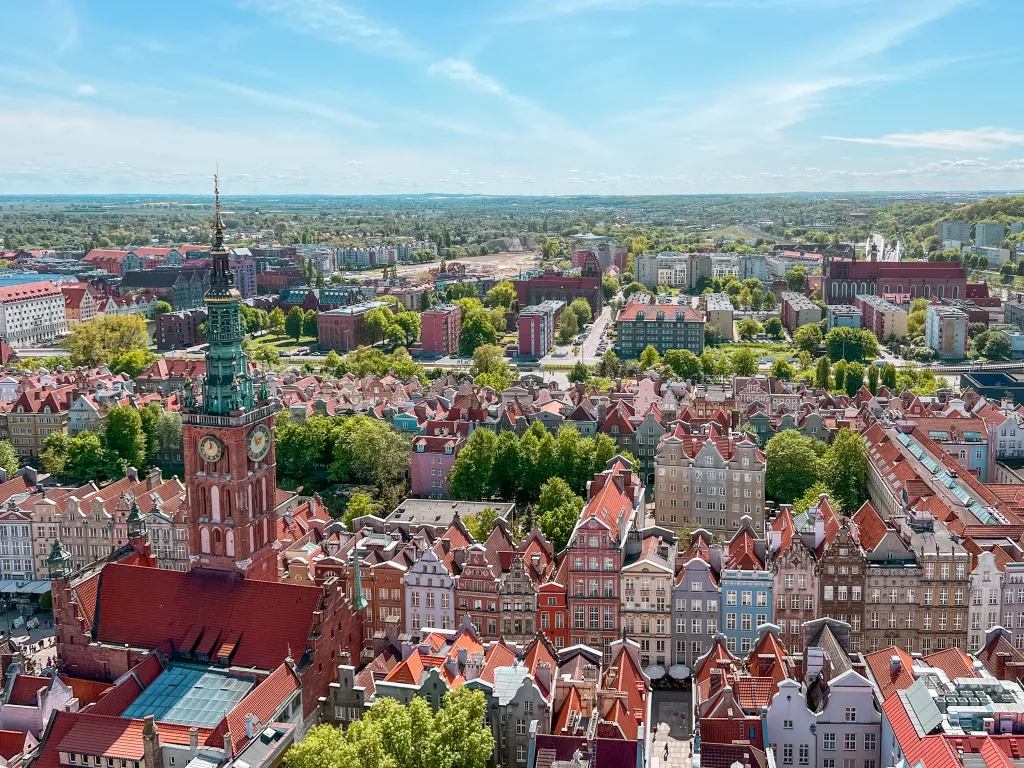
Poland Travel Guide
First, I will provide general information on topics such as transportation, meals, and budget. Then, I will share my own travel itinerary in detail.
Poland Transportation Guide
For intercity travel within the country, I always opted for trains. The train network in Poland is exceptionally well-developed; it seems trains reach almost every part of the country. Here’s an account of my transportation experience: I flew from Kutaisi, Georgia, to Krakow via Wizz Air.

I took the train from Krakow airport to the central train station, which takes 20 minutes and costs 17 zt. Tickets can be purchased either from the ticket machines or directly from the staff inside the train. Krakow city is easily accessible by trams and is also pedestrian-friendly for exploring on foot. I used the tram only once; otherwise, I walked everywhere. I took the night train from Krakow to Gdansk, which cost 93 zt. The train departs at 00:09 am and arrives at Gdansk train station at 07:59 am. I toured Gdansk entirely on foot.
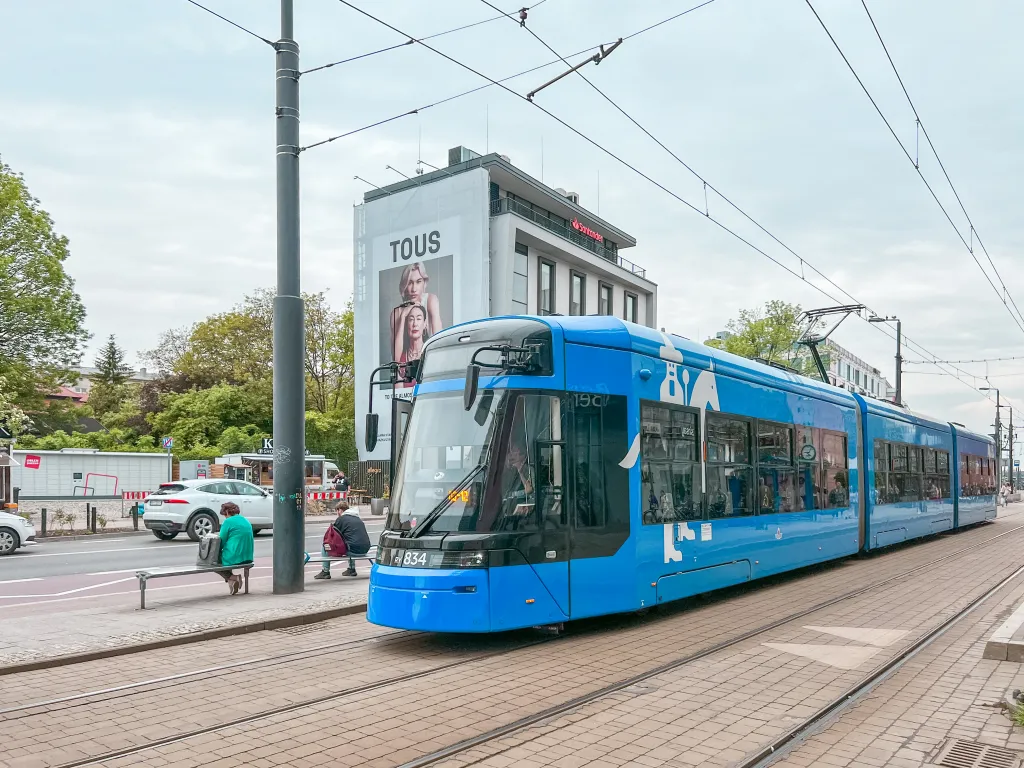
Once more, I took the night train from Gdansk to Wroclaw, costing 79 zt. Departing at 22:43, I arrived in Wroclaw by 04:45. Since it was too early to head into the city, I spent some time at a Starbucks located in the train station. Throughout my visit in Wroclaw, I mainly explored on foot but eventually took a tram back to the center when I found myself quite far from it. My journey continued with a train ride to Katowice, as my return flight was from there, costing 37 zt. Lastly, I took the AP bus from the Katowice train station to the airport for 6 zt. Buses run every half hour during the day and hourly from night into the morning, taking about 45 minutes to reach the airport.

When to go to Poland?
Since Poland is situated in the North, its weather conditions are generally colder compared to most of Europe. However, seasonal patterns have become so unpredictable that making forecasts even for my own city has become challenging. I visited in mid-May, experiencing varied weather across the country: Krakow was rainy, Gdansk sunny, and Wroclaw cloudy but dry. I was comfortable wearing a sweatshirt under a coat.
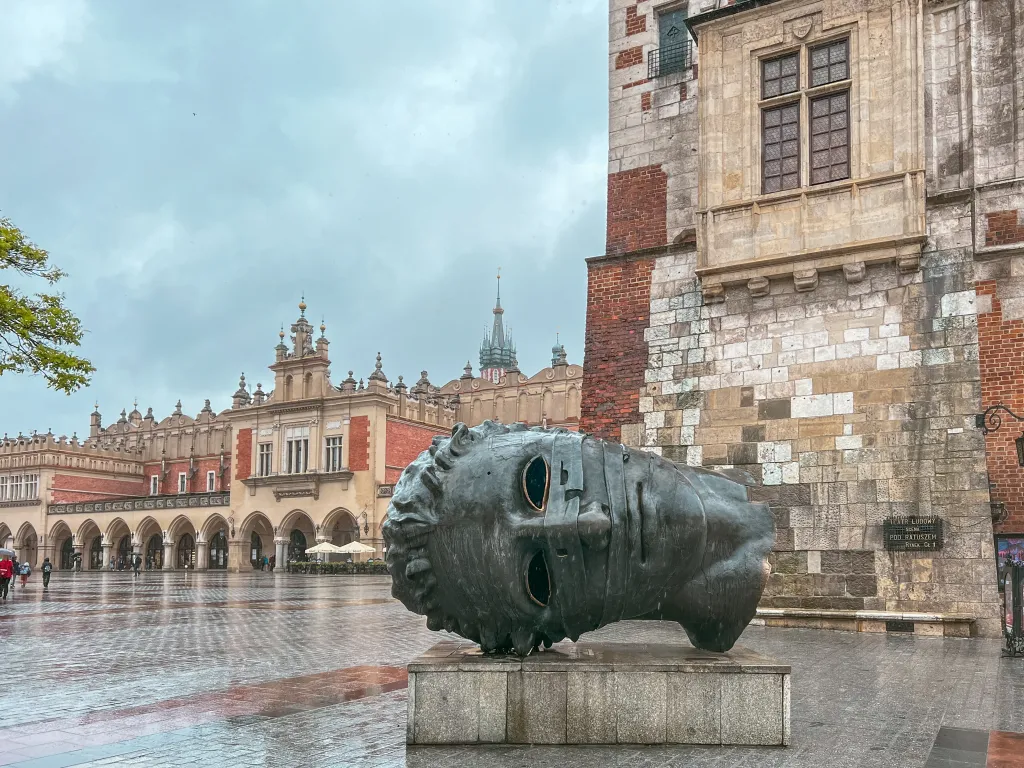
How many days should you spend in Poland?
My trip lasted for 3 nights and 4 days, during which I visited 3 cities. Instead of visiting these 3 cities, I could have opted for a longer stay in Krakow or just visited 2 cities. However, I wanted to explore more of the country and form my own opinions. I’m actually planning to return to Poland, as flights from Georgia are very affordable. In this timeframe, I managed to see many important sights in each city. Yet, there are still other cities in Poland I wish to visit. Based on my research, for a comprehensive vacation in Poland, a minimum of 9 days is advisable to cover most of the significant places adequately. Specifically for Krakow, if you’re interested in visiting the concentration camps and salt mines, I believe at least 2 nights and 3 days are necessary. Traveling solo gave me the flexibility to explore each of the other cities in just one day, starting my explorations at 8 AM and touring for at least 12 hours non-stop.
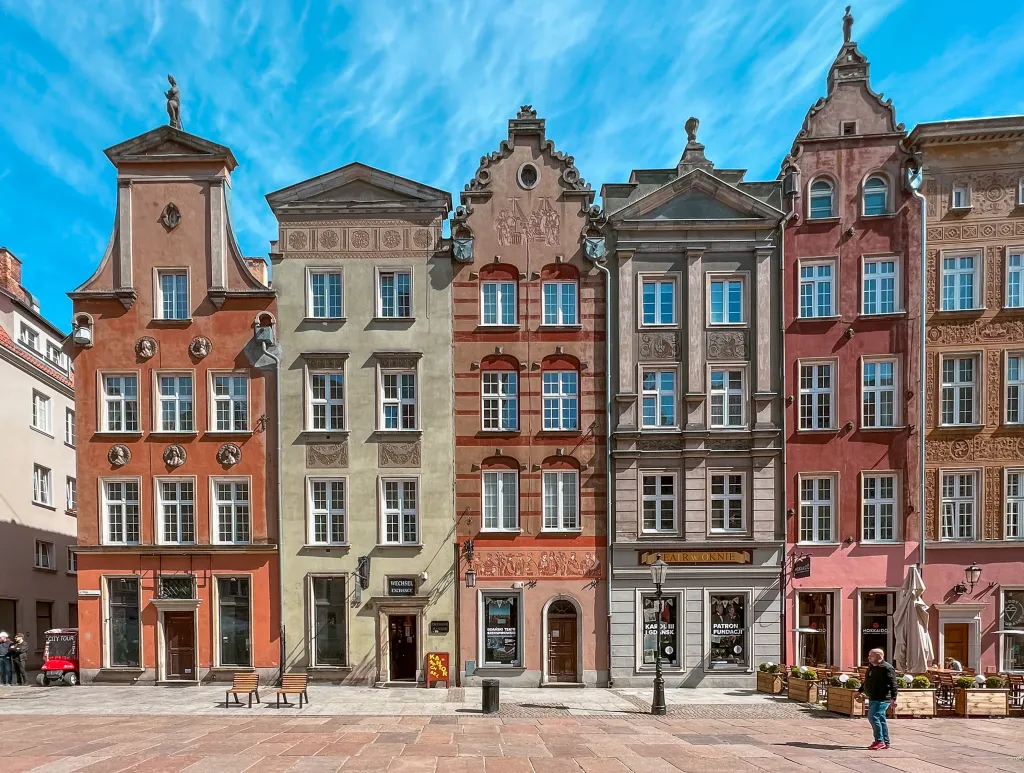
Polish Cuisine – What to Eat in Poland?
Polish cuisine might not be as widely discussed as other culinary traditions, but it has a rich heritage shaped by both its climate and history. Like many Eastern European cuisines, Polish food is crafted to sustain through cold weather, emphasizing hearty ingredients. The country’s history of invasions has also introduced a diversity of dishes, integrating flavors from Russia, Hungary, Germany, Belarus, and Romania. Here, I’ll share insights into the most renowned Polish dishes I’ve encountered and tasted. Additionally, I’ll suggest places to try these dishes in the travel route section provided below.
An intriguing aspect of Polish culinary culture is the ‘Milk Bar’ concept. Originating from the communist era, Milk Bars are state-run eateries offering substantial, traditional meals at affordable prices. Post-war, these establishments typically served dishes rich in meat, potatoes, soups, vegetables, dumplings, and dairy products — true to their name. While they’re far from luxurious, Milk Bars offer an authentic, budget-friendly taste of Polish cuisine.
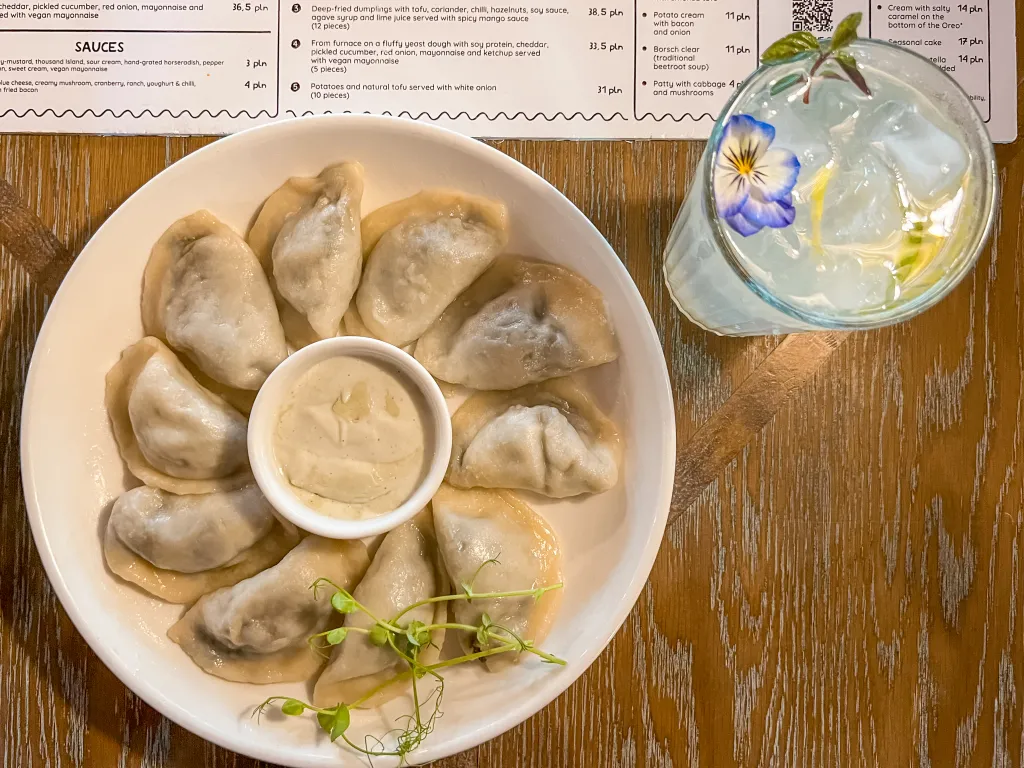
Pierogi: Similar to ravioli, this dish features a doughy exterior with a variety of fillings inside.
Zapiekanka: A popular street food, reminiscent of pizza on a baguette. The classic version includes mushrooms and cheese, though numerous variations exist. While ketchup and other sauces are common toppings, I personally found onion crisps to be a delightful addition.
Obwarzanek: Resembling both the Turkish bagel and German pretzels, this street food is an excellent breakfast option.
Golabki: This is Polish-style stuffed cabbage.
Bigos: Known as hunter’s stew, it consists of chopped meat, sauerkraut, and fresh cabbage.
Menus may also feature international options like Hungarian goulash and Russian borsh soup.

Is Poland Cheap? Poland Travel Budget
Firstly, it’s important to note that the Polish currency is the Zloty, abbreviated as PLN. While they primarily use their own currency, Euros are sometimes accepted as well. Since I predominantly used my credit card, I calculated all prices in Euros. I believe Poland was the cheapest trip I’ve ever taken 😃. In total, transportation, accommodation, and all other expenses amounted to 240€. Poland is indeed budget-friendly, particularly for dining out. At places like Milk Bars, a substantial meal with a drink costs around 6-7€. Though I only ate there once, preferring popular restaurants where I spent about 12-13€ for satisfying meals including drinks. The cost of coffee in cafes is approximately 3€. Accommodation costs were low as I spent two nights on trains and one night in a hostel. When traveling solo, staying in hostels with female dormitories is economical for me. I explore until I’m worn out and just need a place to sleep. I barely interact with anyone before sleeping and head out early the next morning. In summary, considering the incredibly low price of my plane ticket, the overall budget was very reasonable. Here is a breakdown of my travel expenses…
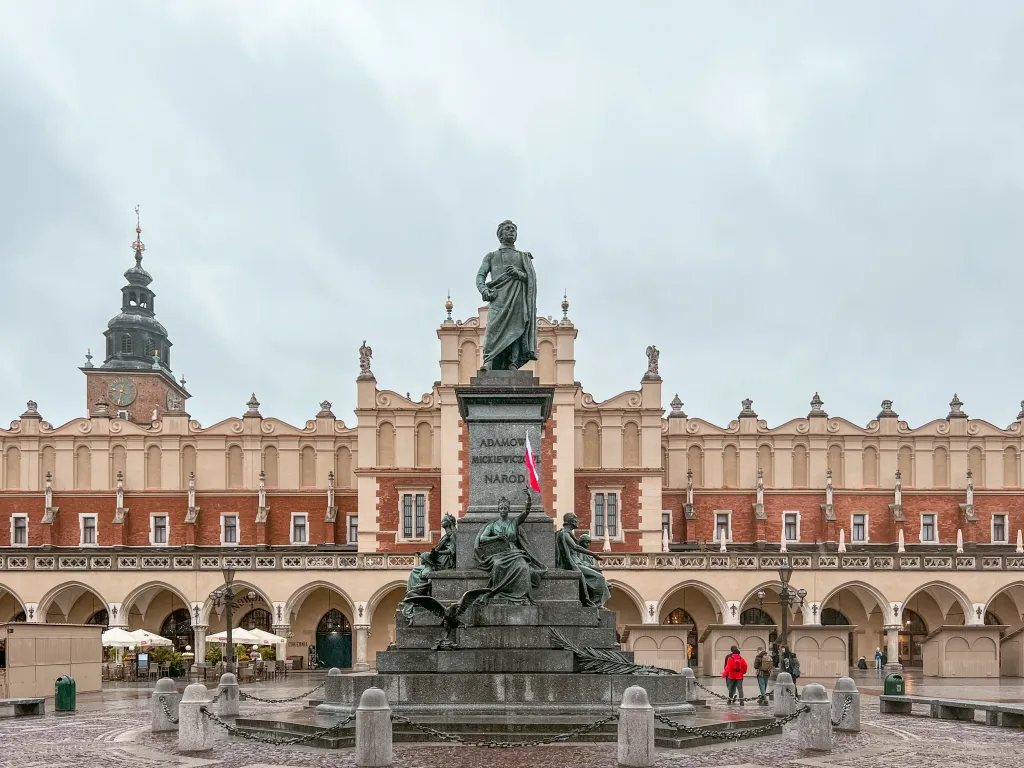
3 Nights and 4 Days Poland Travel Budget
- Flights from Kutaisi to Krakow, and back from Katowice: 57€
- Domestic transportation: Including 3 train rides, 2 airport transfers, and 2 city tram rides, the total cost was 52€.
- Accommodation: Spent 15€ for a stay in a hostel with a female dormitory.
- Luggage Storage: Used the luggage storage facilities at train stations 3 times, totaling 8€.
- Dining: Enjoyed meals at nice cafes and restaurants, along with tasting street food, which amounted to 98€ in total.
- Sightseeing: Visited 2 paid attractions, costing a total of 10€.
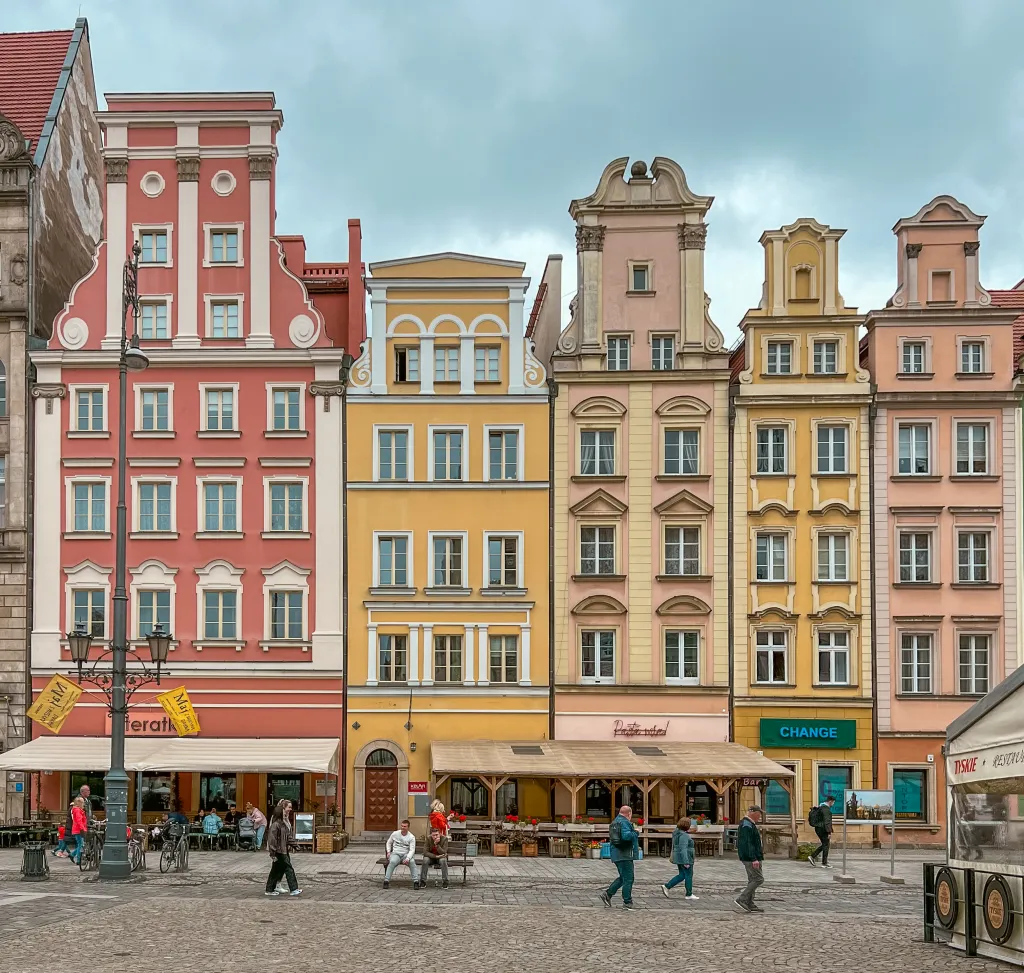
Poland itinerary
Krakow Things to Do
Rynek Glowny: This is the main square of Krakow. A UNESCO world heritage site, it is located in the old town of Krakow.
St. Mary’s Basilica: Built in Gothic style, it is one of the most important churches in Poland. The trumpet is played every hour from the higher of the two towers.
Sukiennice: One of the oldest shopping centers in the world, dating back to the 14th century, similar to Turkish Grand Bazaar but smaller.
Rynek Underground Museum: Under the main square, a museum about how this place used to look, exhibiting items from the 12th century and onwards.
Maly Rynek: This is another small square in the Old Town.
Church of St. Anne: It’s an 18th century church, I guess it’s not very popular, I didn’t read much about it, but I really liked the inside of this place, so I just wanted to mention it.
Planty Park: A very beautiful park surrounding Old Town.
Florianska Street: A photogenic street with colorful houses, restaurants and shops.
Wawel Castle: The place where the royal family used to live, can now be visited as a castle complex and art museum. Just below the castle there is a statue of a dragon that spits fire out of its mouth every 5 minutes.
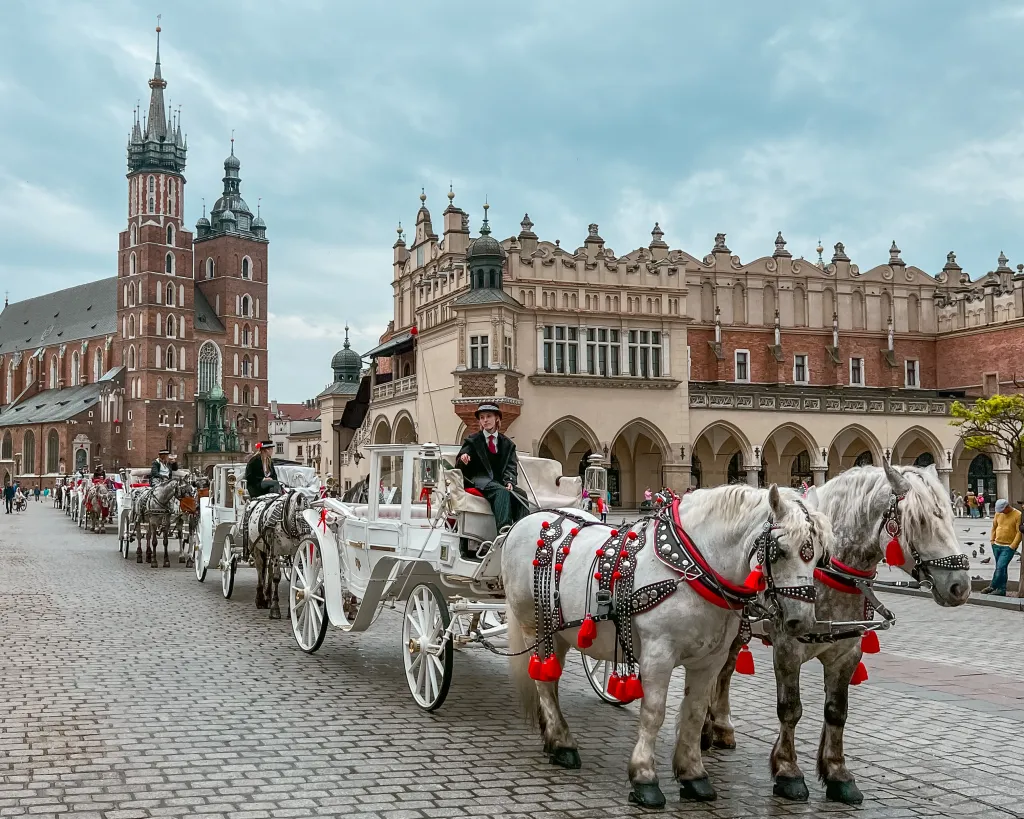
Schindler’s Factory: In 1939, Oskar Schindler purchased an enamel factory in Krakow and employed many Jews from the Krakow Jewish ghetto, thereby saving them from being sent to concentration camps. Today, this factory is accessible as a museum.
Kazimierz: Known as the Jewish quarter until World War II due to its large Jewish community, Kazimierz now thrives as a vibrant area filled with exquisite cafes and vintage shops. It also houses the Schindler’s List Passage, famously depicted in the movie Schindler’s List.
Jewish Ghetto Memorial: A poignant square adorned with 68 empty metal chairs, erected in memory of the 68,000 Jews murdered by the Nazis in Krakow.
While I have postponed visiting them to my next trip, the Auschwitz and Birkenau concentration camps, situated near Krakow, stand as significant historical sites. One option for visiting is to join a tour from Krakow; however, for those preferring to go independently, there are direct buses from Krakow MDA bus station to the camp museum, which is the simplest route. Alternatively, one can take a train to Oswiecim and from there, either take a local bus or walk to the camps, with the walk taking about half an hour. Additionally, the Wieliczka Salt Mines are worth a visit.
In my opinion, these are the must-visit places in Krakow.
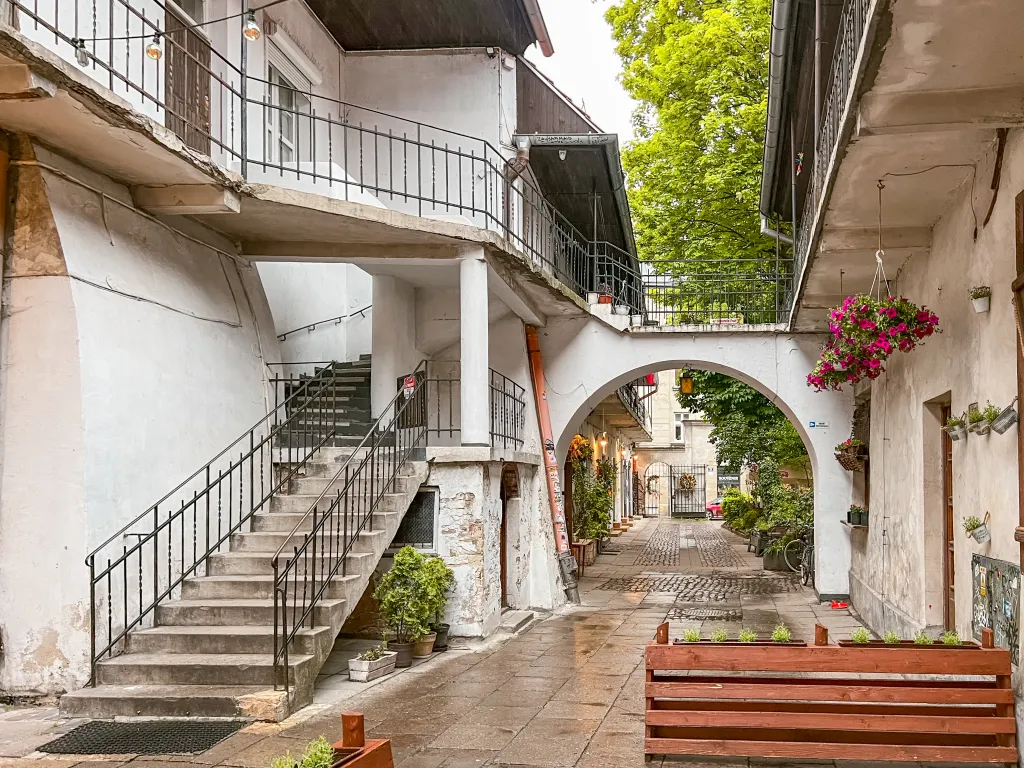
Krakow Accommodation
My only stay in Poland was in Krakow and I stayed in a hostel, but while I was researching I also found some affordable tiny studio apartments and hotels. I will share with you the accommodation options for different budgets as a result of my detailed research on reviews and locations. When I go alone, I don’t go for luxury accommodation, but when I’m with my family, I prefer nice places, so I look for all kinds of accommodation in my research.
Hostels: Girls Hostel, Mundo Hostel, Dizzy Daisy, Hostel u Kmity, Bubble Hostel
Budget-friendly accommodation: Cracow Rentals Zacisze, ON/SET APARTHOTEL, Boom Apartments, Dluga Apartments
Mid-range accommodation: H11 Aparthotel, Art Boutique, Hotel Jan, Sky Hotel Krakow
Luxury accommodation: Hotel H15 Luxury Palace, Hotel Unicus Palace, Hotel Pod Różą, Hotel Stary

Where to Eat and Drink in Krakow?
Upon my arrival in the city, the first stop was ‘Pierogarnia Krakowiacy.’ This spot is renowned for its wide selection of pierogi, including my choices of sun-dried tomato and mushroom-filled varieties. Despite its touristic vibe and chain status, the restaurant’s interior and the dumplings themselves were delightful. ‘Camelot Cafe’ boasts a charming ambiance with its photogenic decor. Though I only stopped in for coffee, the menu appeared inviting. A must-visit is ‘Singer,’ where tables crafted from old Singer sewing machines offer a unique setting for enjoying a drink. ‘Eszeweria’ emerged as another favorite cafe of mine, exuding a cozy atmosphere. For vodka enthusiasts, ‘Wodka Bar’ provides an opportunity to sample various vodkas. When in search of a quick meal, ‘Zapiekanka’ from a kiosk in ‘Plac Nowy’ is a solid choice—I opted for one at ‘Endzior.’ ‘Dawno Temu na Kazimierzu,’ a restaurant constructed from four adjacent nostalgic shops, not only serves as a dining spot but also a photographic gem, thanks to its iconic old-style Jewish quarter shop signs. Its name translates to ‘Once Upon a Time in Kazimierz.’ ‘Ariel’ offers a foray into Jewish cuisine and is quite popular among locals and tourists alike. Lastly, while ‘Obwarzanek’ can be found at the ‘Live Bagel Museum of Krakow,’ this snack is widely available on the streets, embodying a simple yet authentic taste of Krakow.
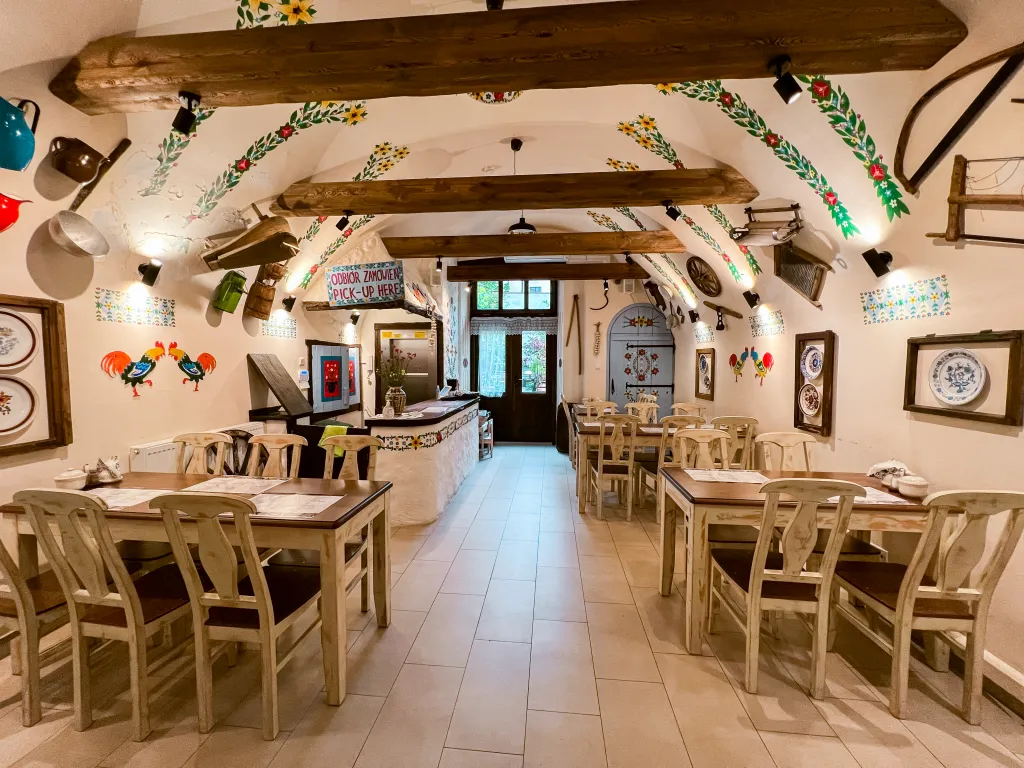
Things to do in Gdansk
During my visit, I spent a vibrant full day in Gdansk, exploring from morning till evening. Here’s a recommended itinerary to experience the best of Gdansk in just one day.
Dluga (Long Market Street): This iconic street begins at the Golden Gate and is adorned with picturesque houses, each begging for a photo. The Main Town Hall, a prominent feature, also graces this street, adding to its historic charm.
Dlugi Targ Square (Long Market Square): The heart of Gdańsk’s Old Town, this square is a hive of activity and beauty. Here, you’ll find the Neptune Fountain and Artus Court amidst a backdrop of colorful houses. The square is also home to delightful cafes and the Green Gate, which offers a passage to the riverfront.
Motlawa River Embankment: Strolling along the riverbank, you’re greeted by a selection of quaint cafes and lively bars, perfect for enjoying the waterfront ambiance.
St. Mary’s Church: An ascent to the basilica’s tower presents a breathtaking panoramic view of the city. It’s an experience that offers a unique perspective and truly spectacular sights.
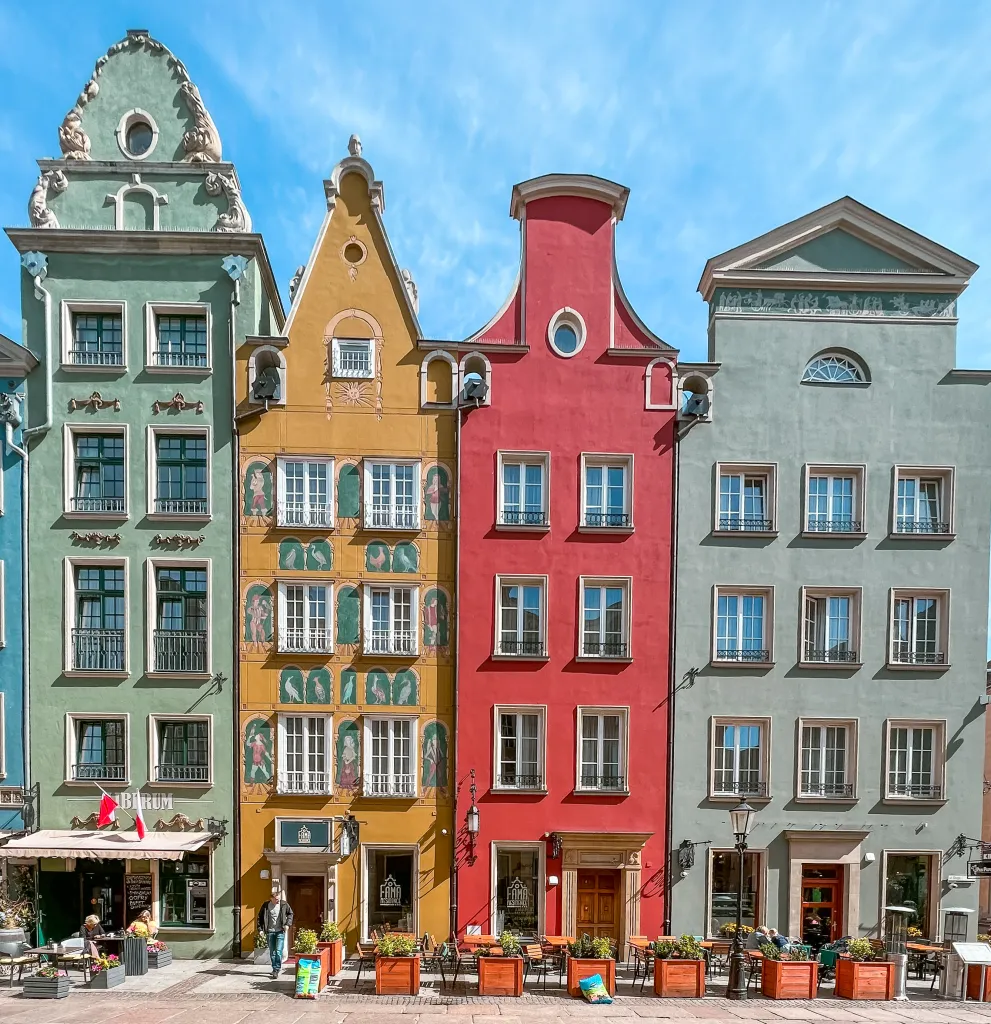
In Gdansk, there’s no shortage of picturesque and culturally rich streets to explore, as well as significant museums that offer a deep dive into history.
Mariacka Street: Renowned for its vibrant houses and unique shops specializing in amber jewelry, Mariacka Street stands out as one of Gdansk’s most beloved locations. The street’s distinctive feature is the whimsical animal sculptures designed to disguise the water pipes, adding an element of charm and creativity.
Piwna Street: This delightful street is bustling with a variety of cafes and bars, all nestled closely together, inviting visitors to relax and enjoy the local atmosphere.
AmberSky: Offering an unforgettable view of the city, the AmberSky Ferris wheel is a must-visit. Don’t miss the chance to capture a memorable moment in front of the neon Gdansk sign located here.
World War II Museum: This comprehensive museum provides an insightful overview of the Second World War, covering its inception, progression, and the devastating aftermath, including Nazi atrocities. I found myself engrossed for about three hours, despite moving through the exhibits relatively quickly. It’s a highly recommended visit for those interested in this period of history, though be prepared to dedicate a substantial amount of time to fully appreciate the museum.

Gdansk Food and Beverage
During my visit, I explored several dining options that offered a taste of Gdansk’s culinary diversity:
Bar Mleczny Stągiewna: I enjoyed a meal at this Milk Bar, a spot known for its hearty, traditional Polish fare at affordable prices. It’s a great way to experience local cuisine.
Bar Neptun: Located on the bustling Long Market street, Bar Neptun is another Milk Bar that’s well-regarded among both locals and tourists.
Len: For a cozy coffee and dessert break, Len was a welcoming choice. Its friendly atmosphere and delicious offerings made for a pleasant stop.
Kawiarnia Drukarnia: Though I didn’t get the chance to visit, this cafe was also on my list for its reputed coffee and snacks.
Mandu: Dinner here was a highlight, with a menu focused on dumplings. The quality and taste of their dumplings were exceptional.
Familia Bistro and Mono Kitchen: These were other dinner venues on my list, known for their inviting menus and warm ambiances, promising a delightful dining experience.
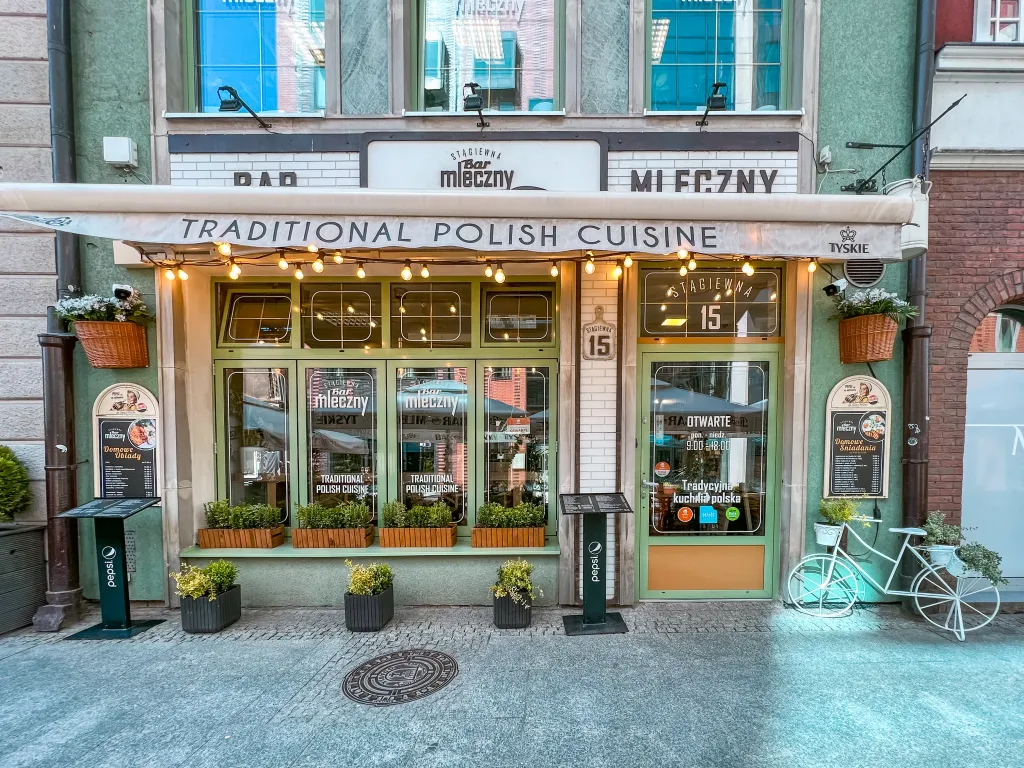
Things to do in Wroclaw
Wrocławski Rynek (Market Square): This vibrant square stands as a centerpiece in Wroclaw, adorned with the stunning Old Town Hall and encircled by picturesque houses. My visit coincided with the Summer Fair, a lively event taking place from late May to early June. It’s also likely the venue for the Christmas market, adding to its year-round appeal.
Mostek Pokutnic (The Bridge of the Penitent): Connecting the towers of the Church of Mary Magdalene, this bridge offers a unique vantage point to gaze over Wroclaw. It’s an essential stop for panoramic city views.
Ostrow Tumski: Known as Cathedral Island, this is Wroclaw’s oldest district. The majestic St. John the Baptist Cathedral and the tumski bridge, adorned with lovers’ locks, are highlights not to be missed.
Jas i Małgosia: Named Hansel and Gretel for their interlinked structures, these two houses are joined by a quaint bridge, symbolizing unity and adding to the city’s fairy-tale atmosphere.
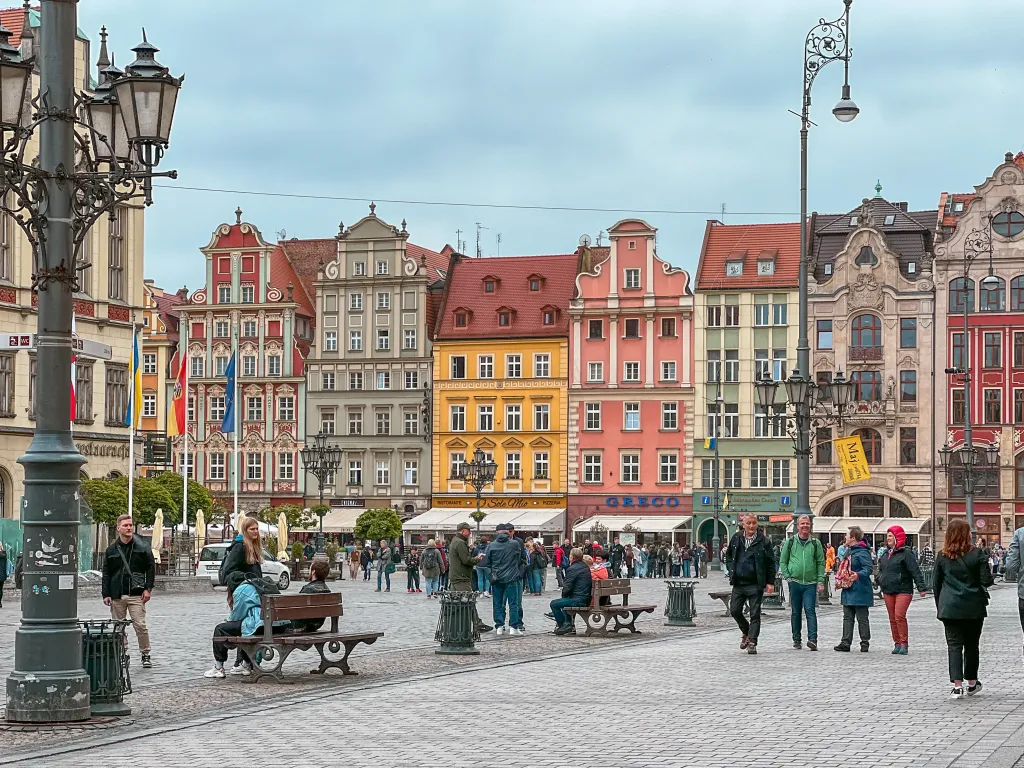
Kolorowe Podwórka na Nadodrzu: A creative initiative has transformed the courtyards of several housing estates into a vibrant open-air mural exhibition, showcasing a diverse range of art in an urban setting.
Uniwersytet Wrocławski: Not only is the university building itself a sight to behold, but visitors can also ascend the Mathematicians Tower for stunning city views. The university’s botanical garden is another gem, offering a tranquil escape amidst beautiful flora.
Hala Targowa: This 19th-century covered market is a must-visit for those who enjoy exploring local markets. It offers a variety of goods, from fresh produce to unique crafts, encapsulating the local shopping culture.
Wroclaw Dwarfs: With approximately 700 dwarf statues scattered throughout Wroclaw, hunting for these charming figures has become a beloved tourist activity. Originating from the “Orange Alternativ” political protest in the 1980s against the communist regime, the dwarfs now symbolize the city’s playful spirit and resilience.
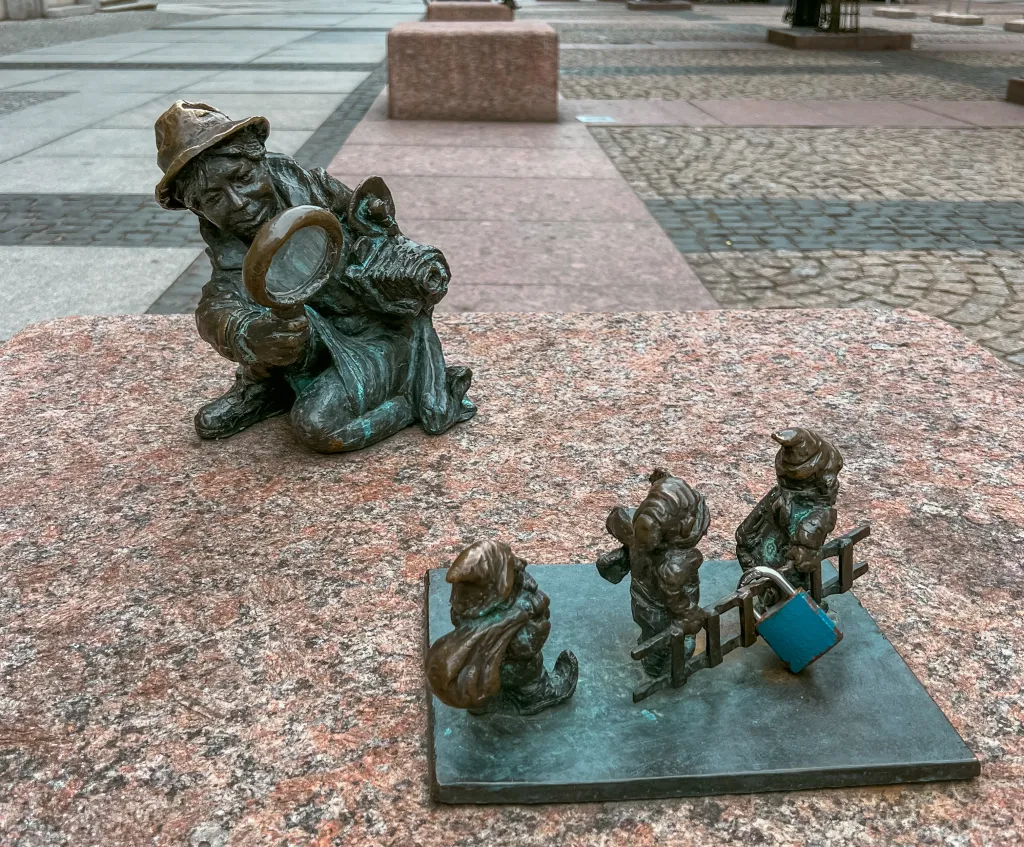
Wroclaw Food and Drink
During my day in Wroclaw, I had the pleasure of dining at ‘Gniazdo’ for breakfast and ‘Iggy Pizza’ for dinner, with a delightful dessert stop at ‘Nanan.’ Each establishment served up delicious fare. Given my limited time, my culinary exploration was brief, but I’ve compiled a list of recommended venues based on thorough research and suggestions. I typically mark desired locations on a map, choosing the nearest option when I’m hungary or it’s time for a coffee break.
Notably, Wroclaw is home to ‘Piwnica Swidnicka Wroclaw,’ reputedly the oldest restaurant in Europe, dating back to 1273. It’s a must-visit for those interested in historical dining experiences.
Breakfast places: Dinnette, Charlotte
Traditional cuisine Kurna Chata, Conspira
Coffee Houses Cafe Rozrusznik, Vinyl Cafe
Milk Bar Bar mleczny Mis, Bar Mleczny Mewa
Beer tasting Browar Zloty Pies, Szynkarnia
Italian: Ragu Pracownia Macaron
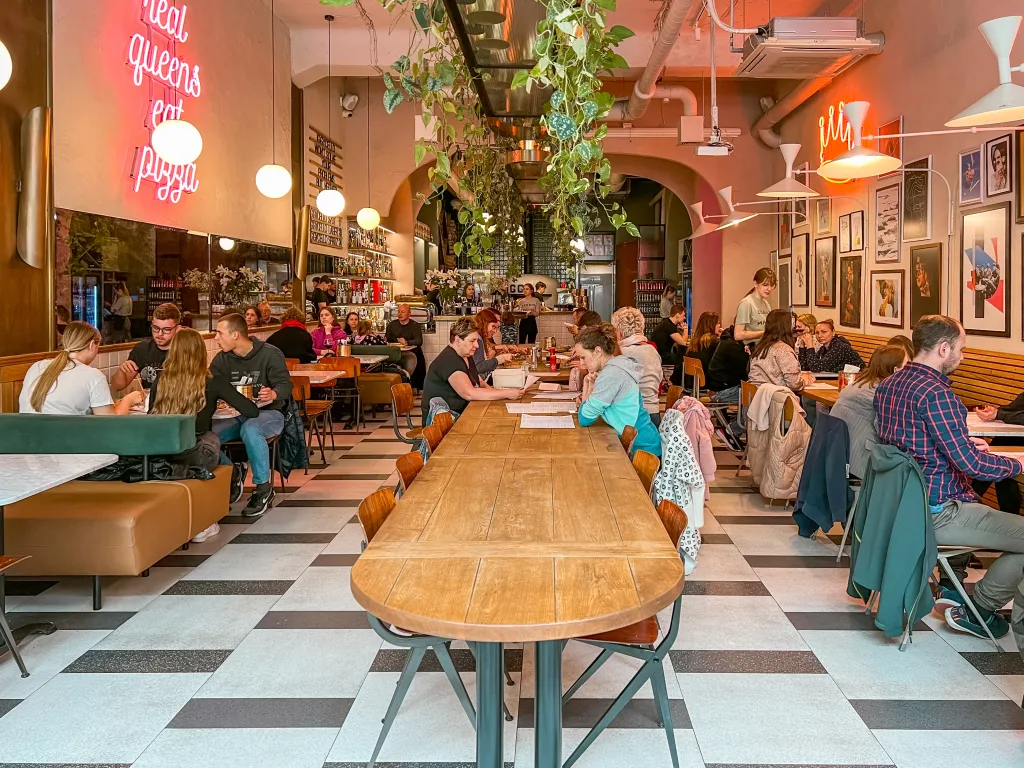
I hope my Poland Travel Guide article will be useful for you and you will have a nice trip to Poland. There may be something I missed, if you have any other questions, please leave them in the comments. If you have any extra suggestions, I would like to hear them in the comments as well. Have a nice trip!
I am waiting for your questions, criticisms and likes in the comments so that I can produce better content.
Don’t forget to follow me for more photos and to be informed about my future posts!
Instagram: lifetime.journey
Tiktok: ihdcnwbcmw.com
Facebook: ihdcnwbcmw.com
Discover more from LIFETIME JOURNEY
Subscribe to get the latest posts sent to your email.